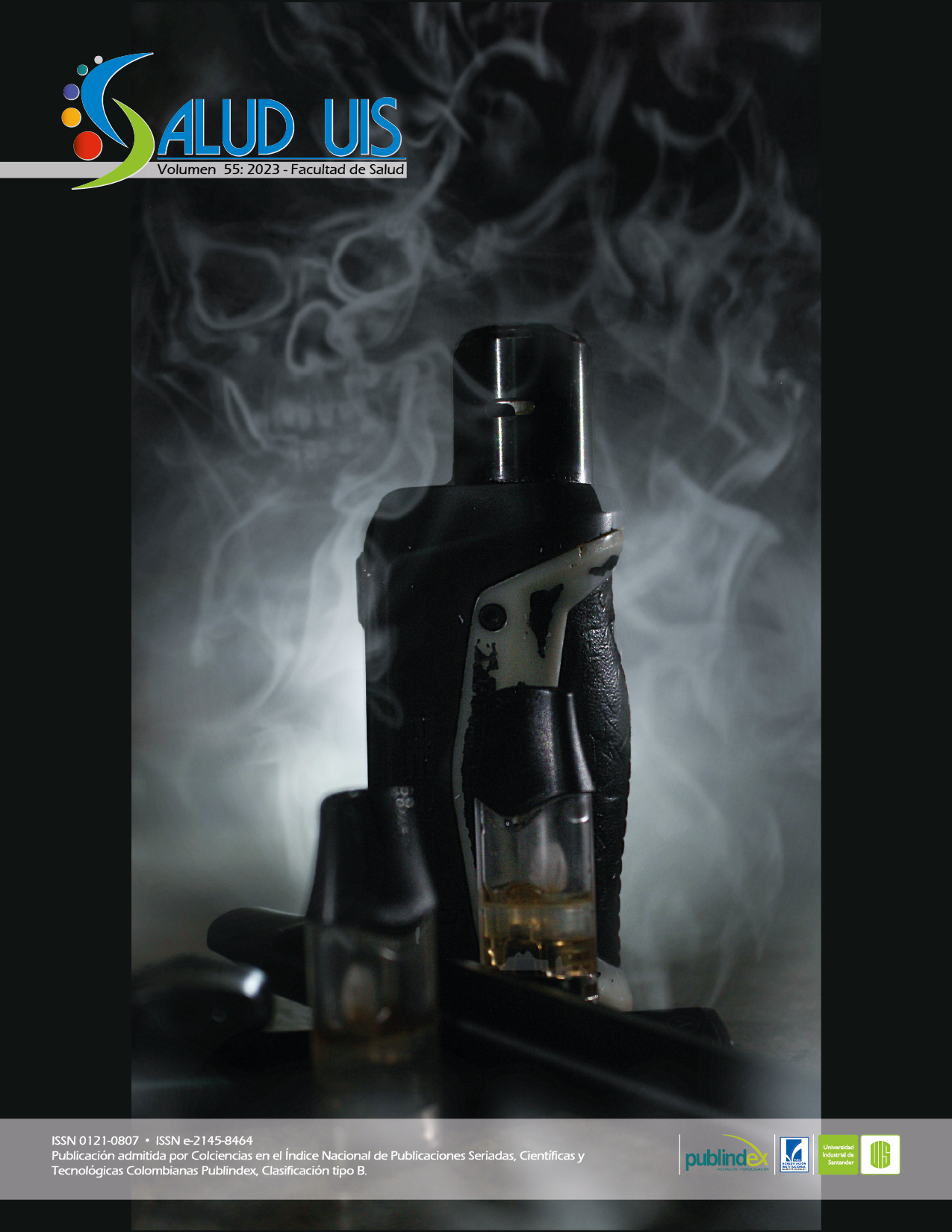Abstract
Introduction: Youth represents a period of vulnerability accompanied by physical and psychological changes that
predispose individuals to risky sexual behaviors, from a context in which the quality of education in sexual and
reproductive health does not meet the needs of the population. Objective: To identify the association between risky sexual behaviors in university women and their satisfaction with the information they have received on sexual and reproductive health throughout their lives. Methods: Descriptive cross-sectional study applied to a convenience sample of 182 university students. Variables related to sociodemographic characteristics, risky sexual behaviors, sources of information and satisfaction with the information received on sexual and reproductive health were analyzed. The association between the variables was determined by applying the chi2 test (p<0.05) and the OR
statistical measure. Results: Sexually active women predominated (70.3%) and women who did not want to get
pregnant at the time of being surveyed (98.9%);. 10.9% of the women surveyed, are sexually active, do not plan and
do not want to get pregnant, the source of education that prevailed were the professionals of health (75.3%). There
was no significant discrepancy between the percentage of women satisfied with the information they received (51%)
and those who were not satisfied (49%). No association was found between risky sexual behaviors and satisfaction
with the information on sexual and reproductive health received throughout their lives, considering that this does not fully represent quality education. Conclusión: The students enrolled in universities located in the city of Medellín show risky sexual behaviors that are not associated with the satisfaction they have with the information on sexual and reproductive health that they have obtained throughout their lives.
References
V Montero A. Educación sexual: un pilar fundamental en la sexualidad de la adolescencia. Rev Med Chile 2011; 139: 1249-1252. doi: http://dx.doi.org/10.4067/S0034-98872011001000001
UNESCO. Educación integral de la sexualidad: conceptos, enfoques y competencias. OREALC 2014. Chile 72 p. Disponible en https://unesdoc.unesco.org/ark:/48223/pf0000232800
Cardona Arango F. Conceptos y experiencias sobre la educación sexual. Rev Colomb Obstet Ginecol. 1978; 29(6). doi: https://doi.org/10.18597/rcog.2223
Vargas Trujillo E, Cortés D, Gallego JM, Maldonado D, Ibarra, M.C. Educación sexual de mujeres colombianas en la juventud: un análisis desde el enfoque basado en derechos humanos Colombia 2013. Disponible en https://pure.urosario.edu.
co/en/publications/educaci%C3%B3n-sexualde-mujeres-colombianas-en-la-juventud-unan%C3%A1lisi
Ministerio de salud y protección social. Resolución 3280 de 2018. Disponible en: https://www.minsalud.gov.co/sites/rid/Lists/BibliotecaDigital/RIDE/DE/DIJ/resolucion-3280-de-2018.pdf
Folch C, Álvarez J, Casabona J, Brotons M. X Determinantes de las conductas sexuales de riesgo en jóvenes de Cataluña. Rev. Esp. Salud Pública 2015; 89. doi: https://dx.doi.org/10.4321/S1135-57272015000500005
Castellanos Barreto J, Cabán Huertas M, Uribe Rodríguez A. Conductas sexuales de riesgo y comunicación sobre sexualidad entre padres e hijos universitarios. Rev. Psi. UdeA 2016; 8 (2). doi: https://doi.org/10.17533/udea.rpsua.v8n2a03
Dávila. León O. Adolescencia y juventud. De las nociones a los abordajes Última década 2004; 12 (21). doi: http://dx.doi.org/10.4067/S0718-22362004000200004
Gonzalez Y, Lopez V. Sexualidad, Salud y Sociedad. Revista latinoamericana 2015; (21): 136-153. doi: http://dx.doi.org/10.1590/1984-6487.sess.2015.21.08.a
W Coutts YG. Morales B. La educación sexual debe comenzar en el hogar y continuar en la escuela. Rev. chil. pediatria 2011; 82 (5). doi: http://dx.doi.org/10.4067/S0370-41062011000500012
Tiusaba Rivas A. Prevenir y educar: sobre la historia de la educación sexual en Colombia. Praxis & Saber 2017; 8 (17): 85 - 101. doi: https://doi.org/10.19053/22160159.v8.n17.2018.7202
Vanegas A, Pabón G, Plata S. Contribución de la investigación a la educación en sexualidad para prevenir el embarazo en adolescentes. Rev Col Enfermería 2018; 16: 32–42. doi: https://doi.org/10.18270/rce.v16i13.2302
Rojas R, Castro F, Villalobos A, Allen B, Romero M, Braverman A. Uribe P. Educación sexual integral: cobertura, homogeneidad, integralidad y continuidad en escuelas de México. Salud pública Méx 2017; 59 (1). doi: https://doi.org/10.21149/8411
Barbón O. Fuentes de información sobre educación sexual en adolescentes estudiantes de enfermería. Rev Cubana Hig Epidemiol 2011; 49(2): 238-246.

This work is licensed under a Creative Commons Attribution 4.0 International License.
Copyright (c) 2022 Andrea Mejía, Lina María Oliveros-Riveros, Elsa M. Vásquez
